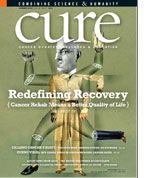Publication
Article
CURE
Myths About the Dying Process
Patients and caregivers can only make truly informed decisions about end-of-life care when they understand the natural process of dying, says Tani Bahti, RN.
Patients and caregivers can only make truly informed decisions about end-of-life care when they understand the natural process of dying, says Tani Bahti, RN.
When people don’t understand the wisdom of the body, they will make decisions based on fear, lack of information or misinformation,” Bahti says. “Knowing and honoring the body’s changes will lead to the best possible choices and care for our loved ones.”
Based on her work as an educator on end-of-life issues, Bahti responds to some common myths about the dying process.
Myth: Dying is painful.
Reality: Pain is not an expected part of the dying process. In fact, some people experience no pain whatsoever. If someone’s particular condition does produce any pain, however, it can be managed by prescribed medications.
Myth: Not drinking leads to painful dehydration.
Reality: Natural dehydration is comfortable and causes the release of endorphins that promote comfort. Unlike in a healthy person, providing artificial fluids near the end of life may actually increase discomfort. Natural dehydration results in less chance of nausea and vomiting, swelling and lung congestion.
Myth: If people don’t eat, they should get a feeding tube or they will starve to death.
Reality: The needs of the body and its ability to process and utilize food changes in the final months of life. People do not die because they are not eating; they do not eat because they are dying. Complications from forced feeding and the use of tubes might actually hasten death. One of several reasons people will be more comfortable when not eating is that endorphins, the body’s natural pain killers, are released to promote a sense of well-being and comfort.
Myth: Every means necessary must be used to keep people alive or the caregiver is responsible for their death.
Reality: It is the disease that kills people, not the caregiver. When dealing with a progressive or terminal illness, the use of machines may only prolong dying rather than prolong living. Just because we have technology doesn’t mean it’s always the most appropriate care.
Myth: If people are allowed to stay in bed or sleep as much as they want, they are giving up and will die sooner.
Reality: Energy diminishes throughout an illness. To push people beyond their natural limit will not strengthen them and may further deplete what little energy they have left, thus putting increased strain on their already fatigued body.
Myth: People should be conscious until the moment of death. If they are increasingly tired or confused, they are being over-medicated.
Reality: The dying process almost always causes people to sleep more and more, until they drift into a coma. Sleepiness and possible confusion are often due to natural chemical and metabolic changes in the body as it begins to shut down, and they occur even when a person is not taking any medications at all. Proper management of medication can keep people pain-free while not contributing to confusion or hastening the dying process.
Myth: Narcotic pain medications will cause loss of control or even hasten death.
Reality: Adequate pain medication can actually give people more life, providing better rest and therefore more energy and comfort to do things. Inadequate pain control can harm the body and even hasten death due to damage from stress hormones, increased risk of clots or complications of immobility. Properly prescribed medications do not hasten death. They keep people comfortable during the dying process.
Myth: Dying ends in a final struggle.
Reality: In the end, most people essentially “die in their sleep” due to a coma that can last from minutes to days, depending on their disease.
Myth: When people die alone, their loved ones have failed them.
Reality: One of the mysteries of dying is the timing of death itself. Sometimes people will wait for someone to arrive or for everyone to leave the room before they die. Caregivers should make no judgments about whether they were there at the final moment. The patient’s knowledge of their love, not their physical presence, is what is most important.





